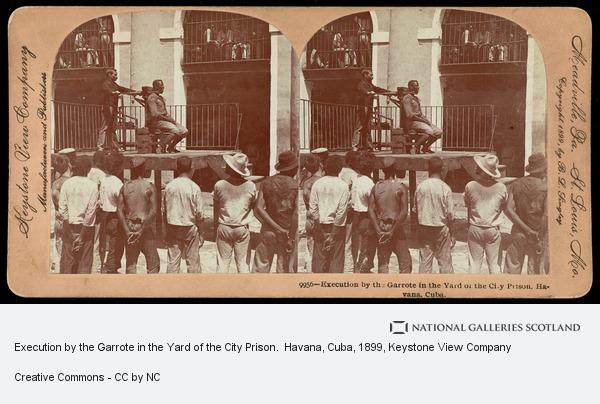
“Strangled Echoes: The Veiled Tale of Executioners and Shadows Unseen”
The garrote, a term laden with historical weight, casts a long and chilling shadow across the annals of capital punishment. This insidious instrument, devised for swift and brutal execution, carries a haunting legacy that transcends borders and epochs. In this in-depth exploration, we peel back the layers of the garrote’s history, examining its origins, mechanics, cultural implications, and delving into intriguing tales that bind this lethal contraption with notorious criminals.
Origins and Mechanics: From the Vile Stick to Calculated Strangulation
The term “garrote” finds its linguistic roots in the Spanish “garrote vil,” translating to “the vile stick.” Historically, the garrote was employed as a means of judicial execution, featuring a cord or wire tightened around the victim’s neck. This macabre device often included handles on either side, facilitating the executioner’s ability to apply pressure for a swift and gruesome strangulation.
Evolving across cultures and centuries, variations of the garrote emerged. Some iterations showcased a more sophisticated design, incorporating mechanical mechanisms that allowed for a controlled and calculated execution. The sinister efficiency of the garrote lay in its ability to swiftly and definitively bring about the end of the condemned.
Cultural Implications: The Garrote’s Role in Diverse Societies

The garrote played a significant role in various cultures throughout history, with its use becoming particularly synonymous with judicial execution in Spain. However, other regions also adopted their own versions of this lethal device, reflecting the multifaceted nature of capital punishment across different societies. The cultural implications of the garrote underscore the complex relationship between justice, vengeance, and the methods chosen to administer both.the garrote has permeated cultural realms, leaving an indelible mark on literature and popular culture. Writers and creators have often used the garrote as a symbol, weaving it into narratives that explore themes of power, justice, and the macabre.
Similarly, in popular culture, the garrote has made its way onto the screen, becoming a recurring motif in crime dramas and suspenseful films. Its silent and swift lethality adds an element of dread, making it a tool of choice for both villains and anti-heroes. The garrote’s presence in movies and television reflects society’s fascination with darker aspects of human nature and the exploration of justice in morally ambiguous situations.
Consider iconic works like “The Godfather” trilogy, where the garrote is featured prominently in scenes of clandestine power struggles and covert operations. These portrayals not only contribute to the mystique surrounding the garrote but also serve as a mirror reflecting societal attitudes towards justice, morality, and the thin line between right and wrong.
Infamous Tales: El Mataviejas and the Gruesome Finale

One of the most infamous tales entwined with the garrote involves José María Manuel Laureano Rodríguez Sánchez, infamously known as “El Mataviejas” or “The Old Lady Killer.” Operating during the early 20th century in Spain, El Mataviejas became notorious for his gruesome murders of elderly women.
The chilling climax to El Mataviejas’ reign of terror occurred on April 23, 1933, as he faced the garrote vil following his conviction for multiple murders. Cloaked in traditional black attire, the executioner tightened the garrote around El Mataviejas’ neck, providing a chilling conclusion to a saga of horror.
Evolving Execution Methods: The Decline of the Garrote

Once a prevalent method of execution, the garrote has witnessed a decline, gradually replaced by more humane and less physically invasive methods in many jurisdictions. This evolution in execution practices reflects the changing societal values and a commitment to upholding human dignity, even in the solemn context of capital punishment.
A Dark Legacy and Society’s Ongoing Moral Evolution
The garrote, with its haunting legacy, stands as a somber testament to a bygone era when justice teetered on the precipice of brutality. As societies progress, so does our understanding of morality and human rights, leading to the abandonment of such brutal execution methods. The chilling notoriety of the garrote remains etched in history, serving as a stark reminder of the complex relationship between justice and the preservation of human dignity. It is a tale that urges reflection on the past, contemplation of the present, and a commitment to shaping a more humane future.
For More Content Visit Here
